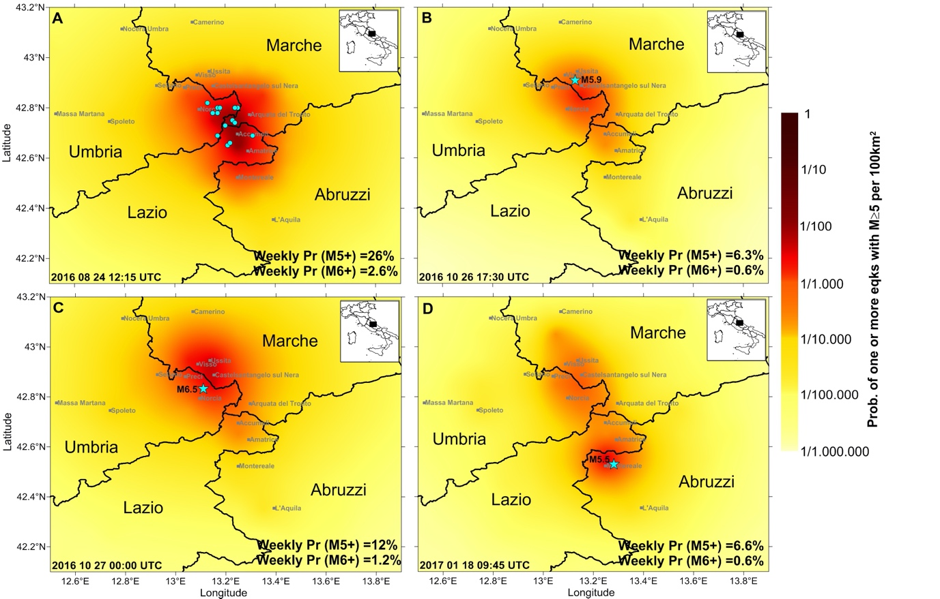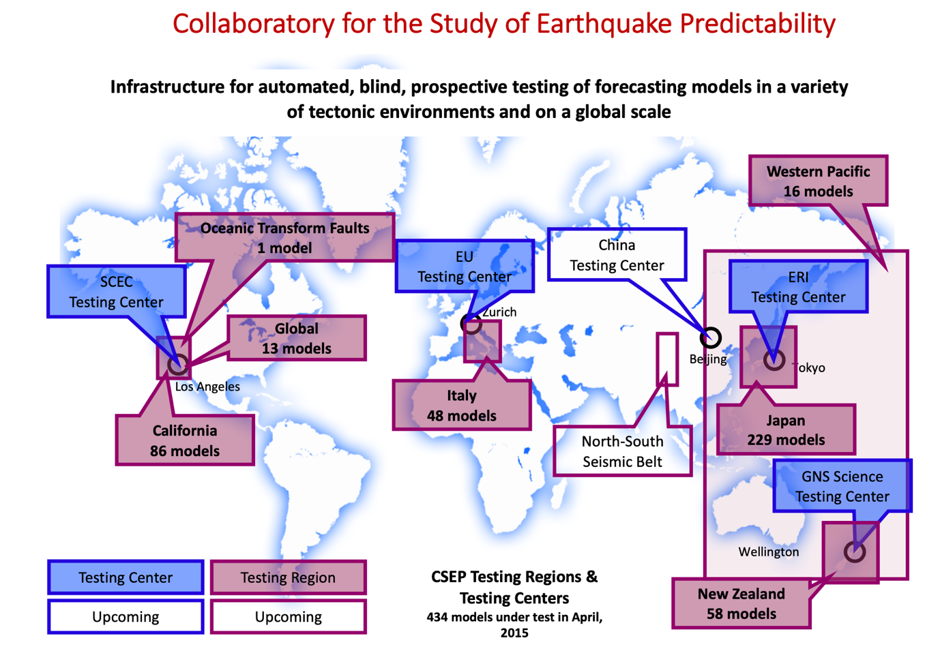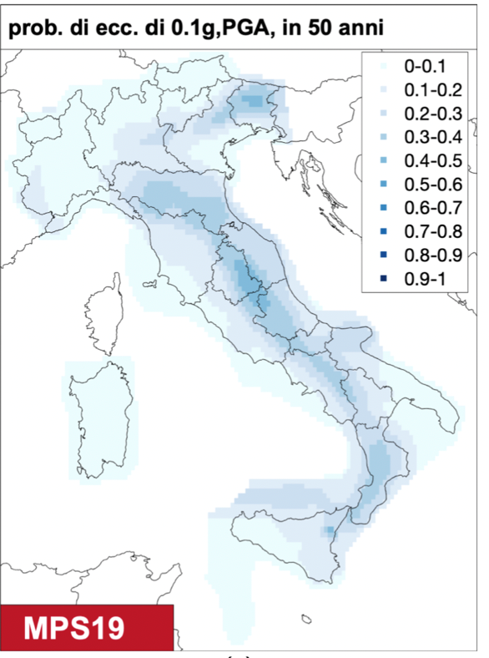Earthquake forecasting and seismic hazard
Earthquakes are a major threat for society, and reliable forecast of the expected ground shaking caused by earthquakes (usually called "seismic hazard") is the primary scientific ingredient for any sound risk mitigation action. The research program under development at the Department of Earth, Environmental, and Resources Sciences at the University of Naples, Federico II, is primarily focused on modelling the space and time evolution of the seismic sequences and the associated ground shaking for different forecasting time windows, from days to weeks to forecast the short-term evolution of seismic sequences, to years and decades for building code purposes.
Different kinds of modelling are explored, empirical, stochastic, physics-based and based on deep learning. The impact of this kind of modelling is twofold: it may provide innovative tools to decision makers for risk reduction purposes, and it allows scientists to test what they really know about the physical process which generate earthquakes.
We are actively working with the Collaboratory for the Study of Earthquake Predictability which provides an international infrastructure for a prospective, transparent and reproducible testing phase for any earthquake forecasting model.
 Some examples of weekly forecasts. (A) a few hours after the Amatrice earthquake and the M3.5+ earthquakes (blue-green circles) that occurred in the forecasting time window. (B) before the M5.9 earthquake (blue-green star) that occurred on October 26. (C) before the Norcia M6.5 earthquake (blue-green star) that occurred on October 30. (D) Forecast number 35, before the Campotosto M5.5 earthquake (blue-green star) that occurred on January 18.
Some examples of weekly forecasts. (A) a few hours after the Amatrice earthquake and the M3.5+ earthquakes (blue-green circles) that occurred in the forecasting time window. (B) before the M5.9 earthquake (blue-green star) that occurred on October 26. (C) before the Norcia M6.5 earthquake (blue-green star) that occurred on October 30. (D) Forecast number 35, before the Campotosto M5.5 earthquake (blue-green star) that occurred on January 18.
 The Collaboratory for the Study of Earthquake Predictability (CSEP) international framework
The Collaboratory for the Study of Earthquake Predictability (CSEP) international framework A preliminary result for the new long-term seismic hazard model for Italy (MPS19). The map reports the probability to exceed a peak ground acceleration (PGA) of 0.1 g in the next 50 years.
A preliminary result for the new long-term seismic hazard model for Italy (MPS19). The map reports the probability to exceed a peak ground acceleration (PGA) of 0.1 g in the next 50 years. Staff
Prof. Warner Marzocchi
Dr. Marcus Herrmann
Dr. Ester Piegari
Dr. Fabio Varchetta (PhD student)
Dr. Ester Manganiello (PhD student)
Active collaboration
Active collaborations with several colleagues at:
Istituto Nazionale di Geofisica e Vulcanologia, University of Southern California, U.S. Geological Survey, University of Bristol, Engineering department University of Naples Federico II, GFZ Potsdam, GNS New Zealand, ETH Zurich, Stanford University.
Projects
The research program is partially funded by the European H2020 project RISE (start date Sept. 1, 2019), and by the Italian Department of Civil Protection.
